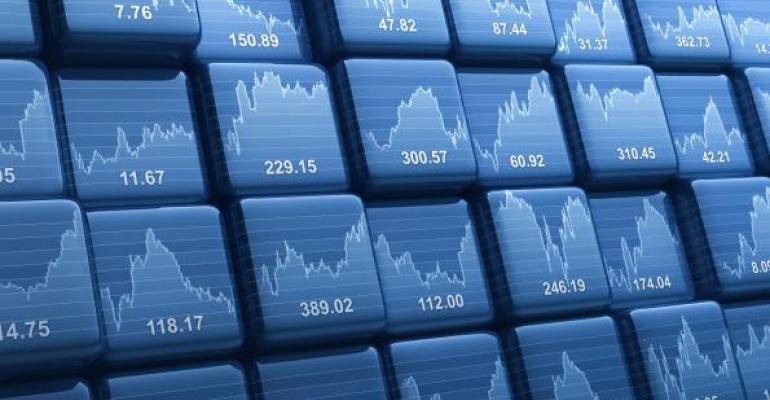by Sarah Ponczek (Bloomberg)
Exchange-traded fund investors who use factor-based products to juice returns or protect themselves from wild swings will probably look back on 2018 as the year when nothing worked.
ETFs that promised everything from defensive characteristics like low volatility to more aggressive strategies such as growth and momentum suffered this year, with the largest funds for each factor tracked by Bloomberg set to end in the red. And as equity market performance took a marked shift from gung-ho to risk averse in the second half of the year, the leader-board for performance and flows has experienced a makeover.
“The first half of the year was very much a continuation of many of the themes that we saw in 2017, a very risk-on sentiment,” said Sara Shores, the head of investment strategy for the factor-based strategy group for BlackRock. “We started to see a shift in the market environment in the third quarter. A cacophony of geopolitical risks around the world seem to be far more front-of-mind for investors, and it’s made a far more fragile market.”
Until the market rolled over in late September, the best performing factor ETFs were about either growth or momentum, the strategy of betting that winning stocks will keep on winning. From the year’s start through Sept. 20, the largest ETF tracking growth stocks, the iShares Russell 1000 Growth ETF, rose 16 percent. The $7.5 billion iShares Edge MSCI USA Momentum Factor ETF, added 15 percent. That compares with a 10 percent advance for the S&P 500 Index.
But just as the more risk-on characteristics had led gains, they also led losses after the market top, with each of the funds falling more than the broader market. On the flip-side, ETFs tracking low volatility stocks, which aim to provide a smoother ride for equity investors, have fared the best this year: The $18 billion iShares Edge MSCI Min Vol USA ETF, ticker USMV, was down 2.5 percent as of the close on Dec. 26, compared with near 8 percent for the S&P 500.
“We’ve seen a lot more returns to quality stocks, to value stocks, and investors looking for cover in safer areas of the market,” said Paul Moghtader, a managing director on the quant team for Lazard Asset Management, which manages $216 billion.
Investor allocation has followed suit. In the first half of the year, growth and momentum ETFs saw the largest amount of inflows -- $8 billion for growth and $3.5 billion for momentum, according to data compiled by Bloomberg Intelligence. In the back half of the year, that amount into growth halved, and momentum ETFs saw net outflows. Meanwhile, value and low volatility products saw the greatest amount of demand, with a combined $30 billion added.
Although funds using the momentum factor stumbled in the back half of the year, BlackRock’s Shores says not to count the idea out. After all, the strategy is meant to change as new market leaders come to the fore. When the iShares Edge MSCI USA Momentum ETF rebalanced in November, its share of health-care stocks almost tripled while tech exposure was cut.
“Momentum itself is a shape-shifter,” Shores said. “It’s re-positioned itself into those more defensive sectors, more defensive stocks, and it has since been able to kind of continue to capitalize on what’s now the growing trend in the market place.”
Looking Ahead
For next year, analysts are almost unanimously calling for a shift to quality -- seeking out companies with healthy balance sheets and cash flow.
Shores says investors should look to defensive strategies like seeking out quality and minimum volatility. Matthew Bartolini, the head of SPDR Americas research at State Street Global Advisors, advises looking for high quality stocks within the value trenches. USAA Asset Management has been shifting money into ETFs focused on higher quality names, according to Lance Humphrey, a money manager in the firm’s global multi-assets team.
“As people position into 2019, investors are getting more defensive, and defensive usually targets quality: quality of earnings, earnings sustainability, making sure you have positions that are solid in case there is more volatility,” said Omar Aguilar, the chief investment officer for equities at Charles Schwab Investment Management. “The theme for factors going into next year is definitely toward defensive.”





